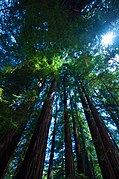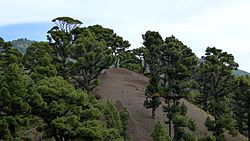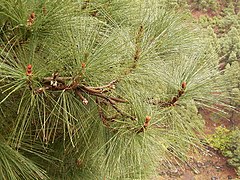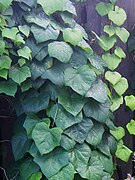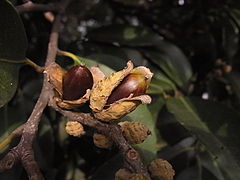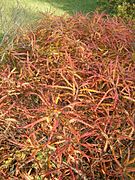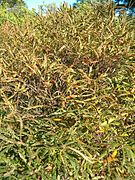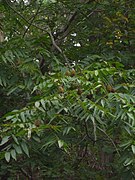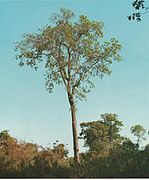|
Fossil flora of Kızılcahamam district
This fossil flora in Turkey stems from at least six Pliocene deposits in Güvem and Beşkonak villages, 80 kilometres (50 mi) north of Ankara, 22 kilometres (14 mi) north of Kızılcahamam and 125 kilometres (78 mi) south of the Black Sea coast. They are 1,000 metres (3,300 ft) to 1,500 metres (4,900 ft) above sea level, extending 15 kilometres (9.3 mi) north-south and 7 kilometres (4.3 mi) east-west. Between six and seven million years ago, a fresh water lake existed there in a forested area with mostly broad leaved deciduous tree species, dominated by sequoia and oak. The Turkish botany Professor Baki Kasaplıgil (1918-1992) from Çankırı who worked at the Biology Department, Mills College, Oakland, California from 1956 to 1992, made fossil collecting trips to the area around Kızılcahamam - Çerkeş road in 1964 and 1968. In the 1964 trip he collected fossil leaves of Glyptostrobus, Sequoia, Zelkova, Fagus, Carpinus, Ulmus, Quercus, Tilia and Acer. In the 1968 trip, he collected 400 plant parts such as leaves, seeds, fruits, twigs and branches. He also collected 50 fossils of frog and fish skeletons and larvae and insects. In 1969, Wayne Fry from University of Berkeley made plant fossil collections in Güvem. Daniel I. Axelrod also assisted in the research of this flora.[1][2][3][4][5] Images of the fossil plants and fossil sites
Fossil plant species so far described from the deposits
Images of some extant close relatives of the fossil species
References
|
||||||||||||||||
Portal di Ensiklopedia Dunia








